Why Read This Article?
Finish Nailer Repair - Replacing the Driver Guide (Ridgid Part # 79004001022)
Article Breakdown
Finish Nailer Repair - Replacing the Driver Guide (Ridgid Part # 79004001022)
Tools & Materials
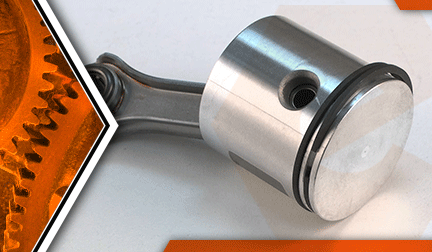

String trimmer out of whack? It's time to face the fix. Whether you are a legendary landscaper or a weekend weed whacker, eReplacementParts.com provides the parts, procedures and facts you need to fearlessly fix what fails you.
The piston is a central component of your trimmer's two-cycle engine. It both provides compression within the engine, as well as transfers the energy from combustion to the crankshaft (which creates rotation).
The piston and rod assembly consists of the piston itself, the rings, the connecting rod, and the connecting rod bearing. The most common reason for replacing the piston assembly is worn or damaged piston rings.
Damage to the piston rings can occur several ways:
Lack of oil will allow the rings to contact the cylinder, causing scoring, and eventually, seizure of the engine. Dirt in the cylinder will act like sandpaper, quickly wearing away the piston rings. Using old or stale fuel will cause varnish build-up, which will eventually 'glue' the rings to the piston. Because the rings seal against the cylinder, any of these conditions will often damage the cylinder. As such, whenever you are investigating with a piston ring problem, you should also carefully inspect the cylinder for damage.
Replacing the piston assembly is not the simplest repair, but it is definitely something you can do yourself; especially when you follow these instructions. This article provides step-by-step instructions for replacing the piston and rod assembly on a Ryobi string trimmer.
Let's get started.
 REMOVING THE PISTON [top]
1. Remove the rear cover.
REMOVING THE PISTON [top]
1. Remove the rear cover.
Remove the (4) screws from the rear cover.
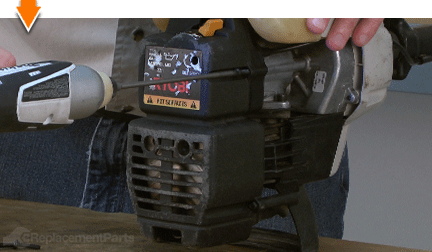
Remove the rear cover from the engine.
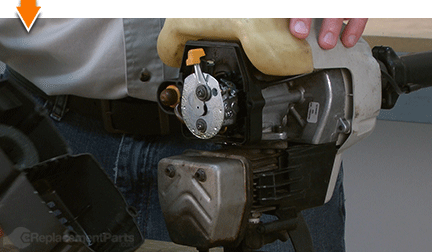
2. Remove the carburetor.
Drain any excess fuel from the fuel tank prior to servicing the carburetor or the fuel lines.
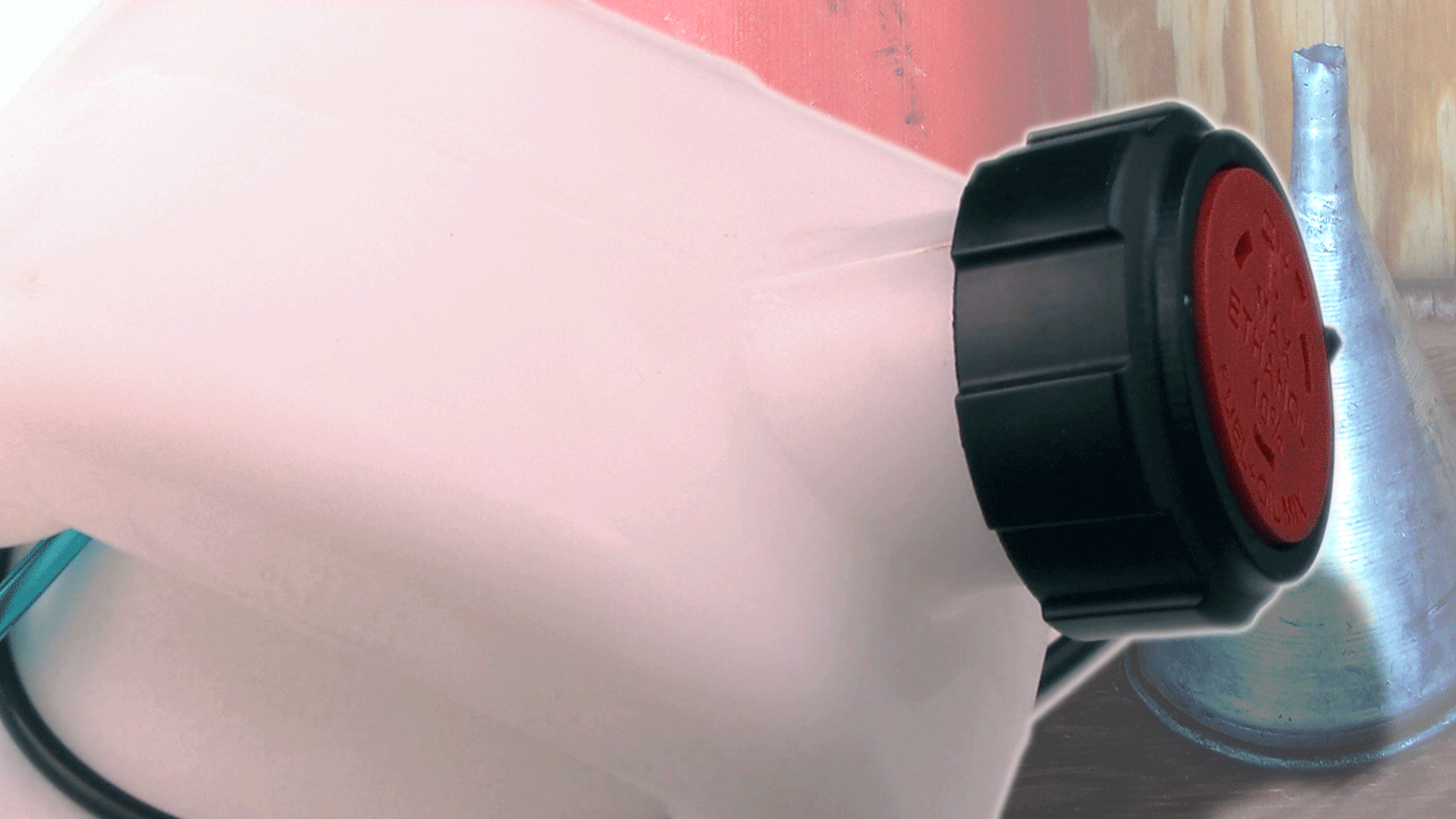
Remove the (2) screws from the carburetor assembly.
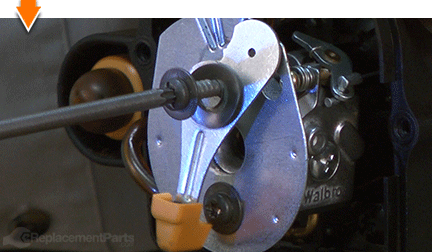
Remove the choke plate and choke assembly from the carburetor.
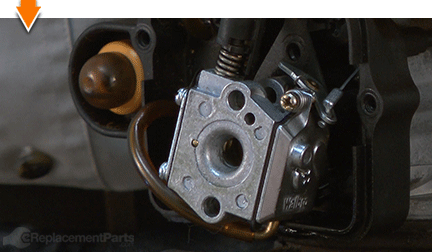
Disconnect the throttle cable from the carburetor (this is accomplished using a lift-and-twist motion).
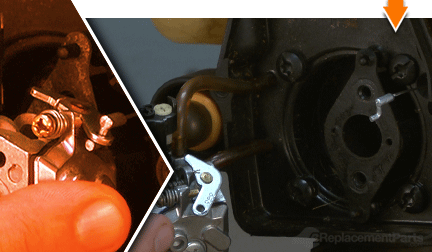
Remove the (2) fuel lines from the carburetor. These lines should pull away from the carburetor inlets relatively easily (by hand); however, small pliers may be used as necessary to disconnect the fuel lines from the carburetor.
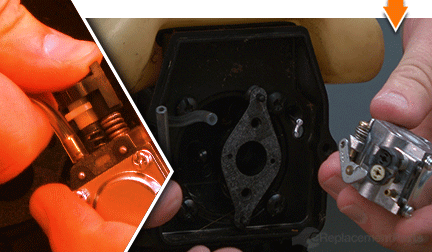
Remove the carburetor from the engine.
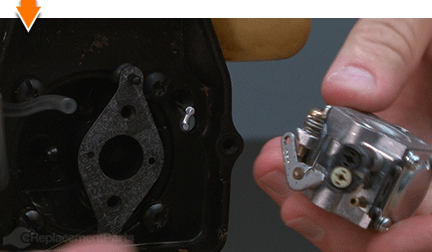
3. Remove the muffler.
Remove the (2) screws from the muffler assembly.
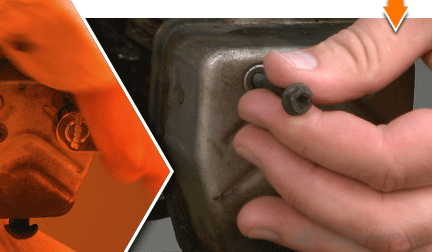
Remove the muffler and exhaust gasket from the engine.
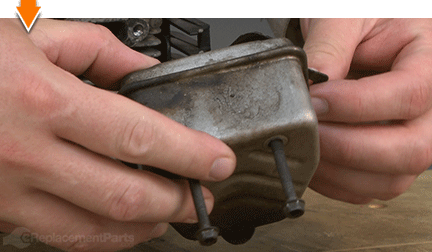
4. Remove the carburetor mounting assembly.
Remove the (4) screws from the carburetor mounting assembly.
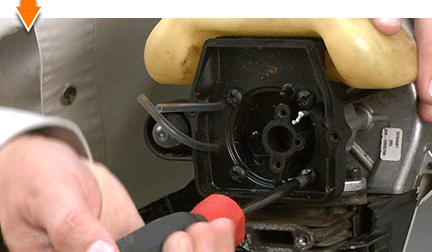
Slide the end of the throttle cable through the opening in the carburetor mounting plate.
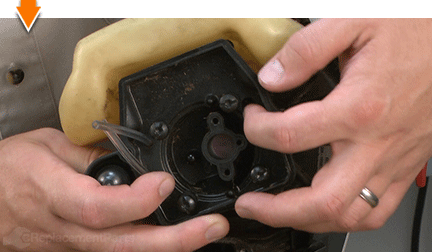
Remove the carburetor mounting plate from the trimmer (this assembly includes the fuel lines and the fuel tank).
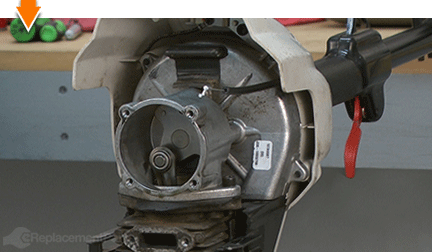
5. Disconnect the clutch housing and shaft from the engine.
Remove the (4) screws from the clutch housing.
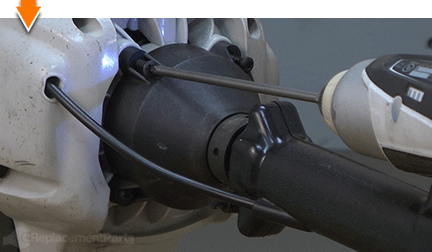
Remove the clutch housing and shaft from the engine. (The throttle cable should also slide freely from the opening in the engine housing.)
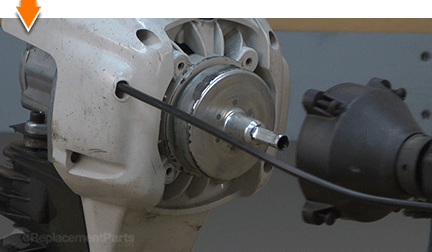
6. Bind the engine.
This step effectively binds the engine, which facilitates the removal of key components (described in subsequent steps).
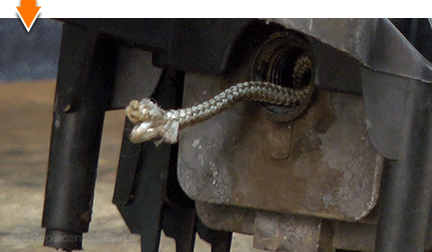
Disconnect the spark plug boot from the spark plug.
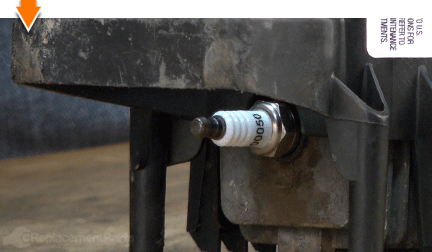
Use a spark plug wrench (or socket) to loosen the spark plug.
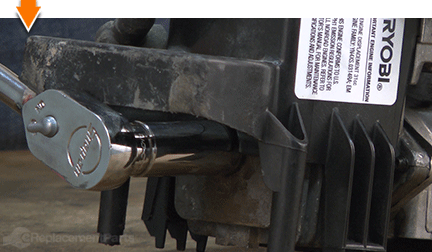
Remove the spark plug from the engine.
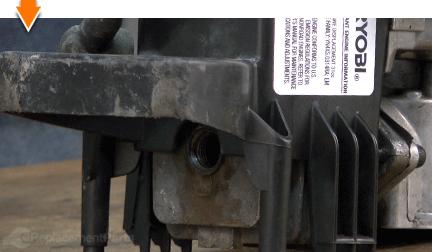
Insert the end of an old starter rope (or similar rope) into the engine cylinder (through the spark plug hole). Continue feeding the rope into the cylinder until the piston is unable to move.
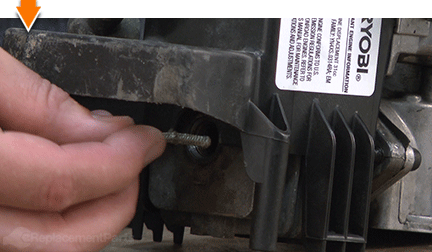
7. Remove the clutch drum.
Loosen the internal screw on the clutch drum using a Phillip's screwdriver (loosen the screw until the clutch drum disengages the spindle; it is not usually necessary to remove the screw entirely).
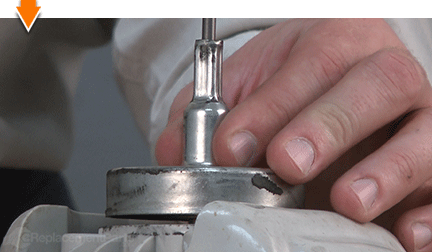
Remove the clutch drum from the spindle.
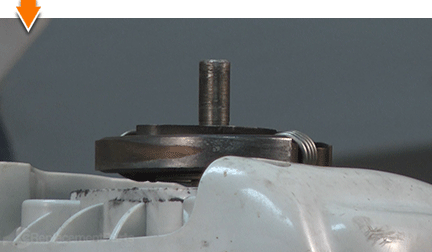
8. Remove the clutch assembly.
Cover the clutch assembly with a shop rag to prevent damage during removal.
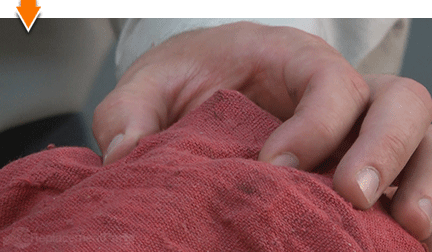
Use adjustable pliers to loosen the clutch assembly.
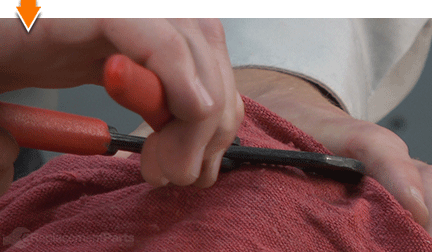
Remove the clutch assembly from the spindle.
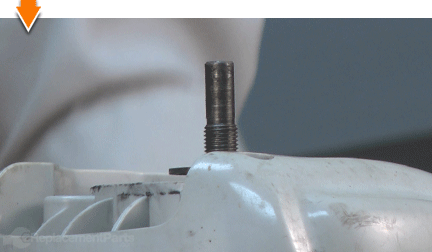
9. Remove the starter assembly.
Remove the (5) screws from the starter assembly. Four of the screws secure the starter to the engine; one screw secures the plastic base.
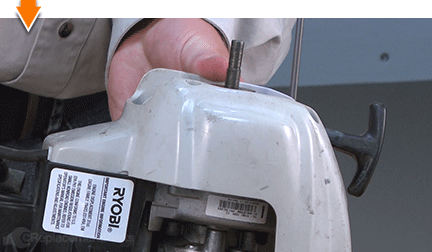
Gently lift the starter assembly away from the engine. (At this point, the assembly will remain tethered to the engine via the primary ignition wire.)
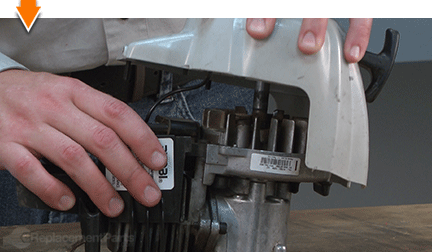
Use long-nosed pliers to disconnect the ignition wire from the ignition.
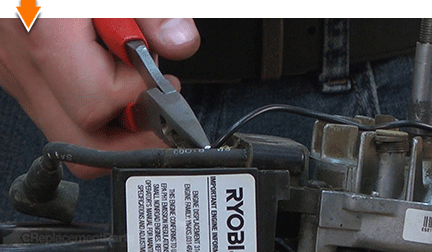
Remove the starter assembly from the engine.
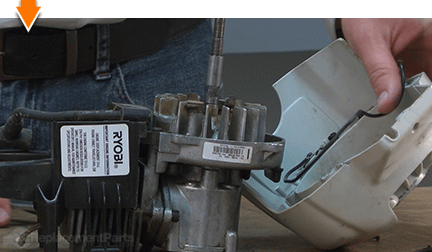
10. Remove the flywheel.
Remove the flywheel spacer from the crankshaft.
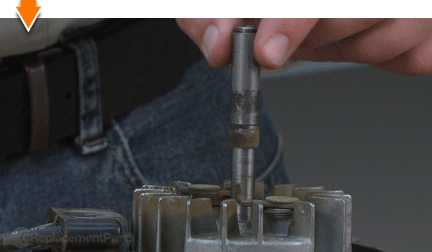
Grasp the flywheel and raise the entire engine assembly slightly above the work surface.
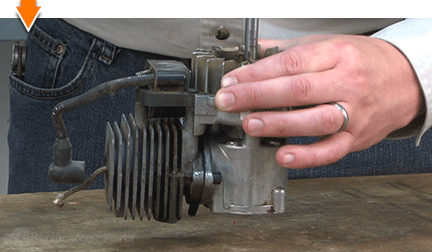
Continue holding the flywheel securely with one hand, while striking the end of the crankshaft with a rubber mallet. Repeat this step until the flywheel disengages the crankshaft and engine.
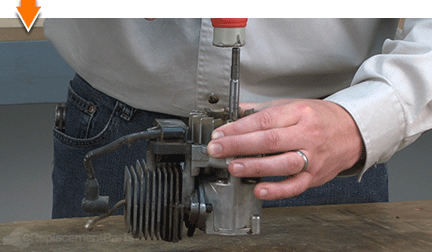
Remove the flywheel assembly from the engine.
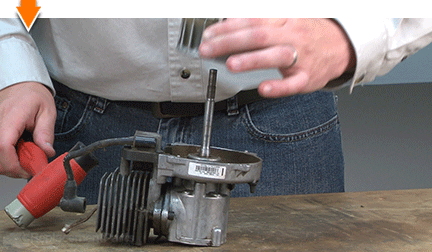
Use a pick or small screwdriver to gently pry the woodruff key from the base of the crankshaft.
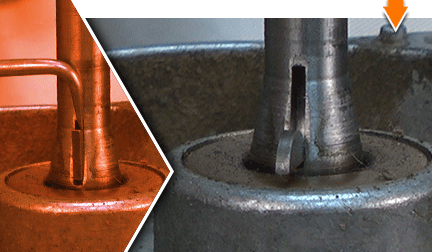
Remove the woodruff key from the crankshaft.
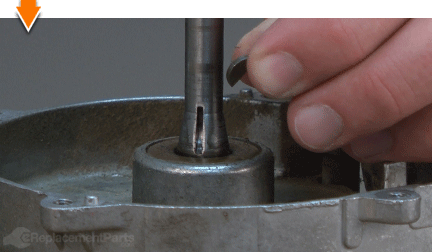
11. Remove the piston assembly.
Remove the (2) screws from the crankcase assembly.
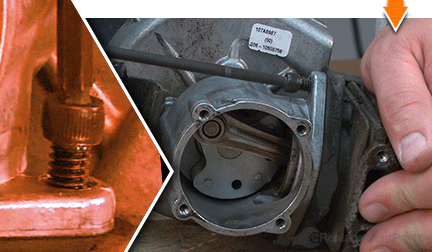
Carefully separate the cylinder from the crankcase assembly (the piston should slide freely out of the cylinder).
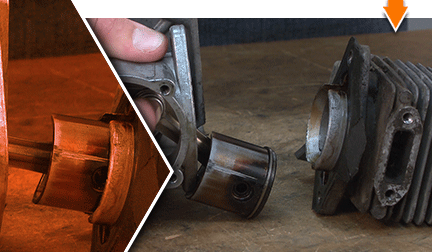
Remove the piston from the crankcase assembly by sliding the connecting rod (and bearing) off of the crankshaft.
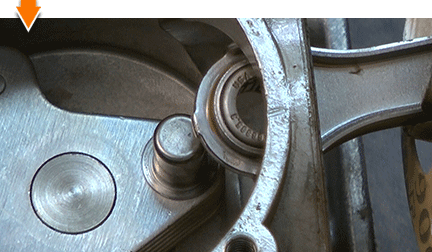
12. Remove the cylinder gasket.
Remove the cylinder gasket from the cylinder assembly.
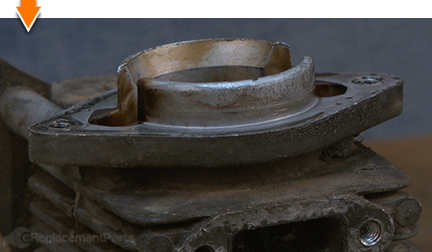
Use a razor blade to scrape away any remaining gasket residue.
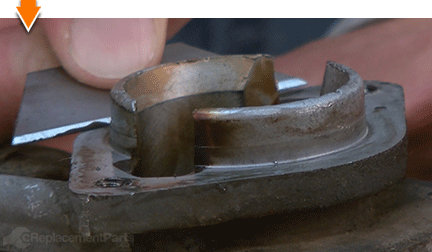
13. Install the cylinder gasket.
Install the cylinder gasket onto the cylinder assembly.
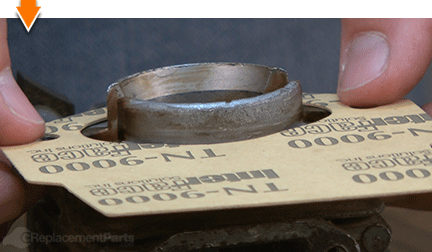
INSTALLING THE NEW PISTON [top] 14. Install the piston assembly.
Lubricate the inside of the cylinder and the outside of the new piston assembly with two-cycle engine oil.
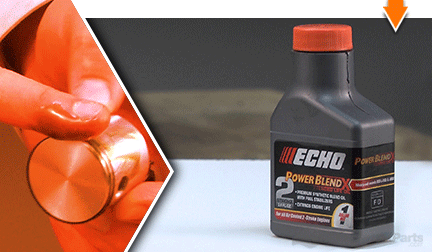
Align the gaps of the piston rings with the roll pins in the grooves. (The roll pins should be centered between each of the gaps.)
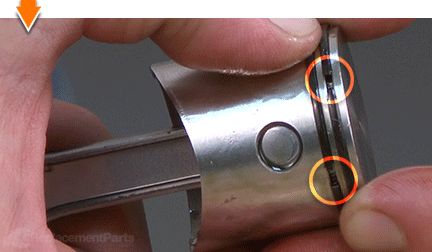
Compress the piston rings (ensure that the gaps remain aligned with the roll pins).
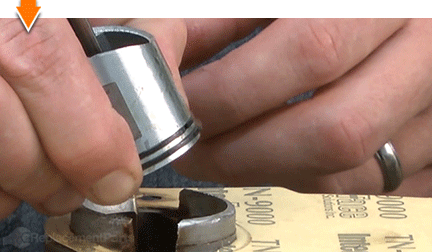
ORIENTATION IS CRITICAL FOR PROPER FUNCTIONALITY OF THE PISTON. Note that one side of the piston skirt has been cut-away in a circular shape. This "cut-away" section of the piston skirt should face the ignition coil.
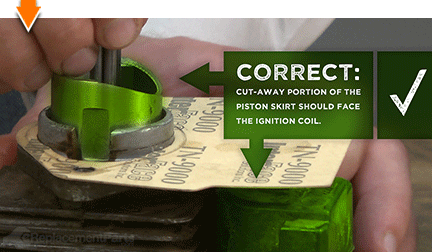
The reverse side of the skirt is straight. Do not install the piston with the straight portion of the skirt facing the ignition coil.
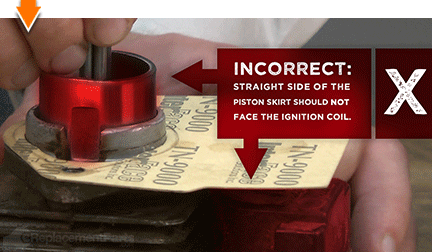
Continue to hold the piston rings in compression, and carefully slide the piston into the cylinder; ensure that the piston rings slide smoothly into the cylinder. (Do not force the piston into the cylinder).
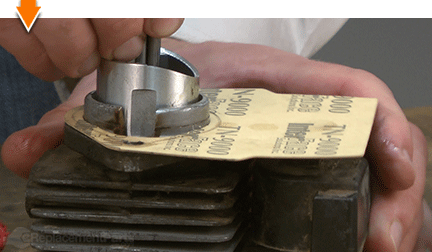
REASSEMBLING THE UNIT [top] 15. Connect the crankcase to the cylinder.
Connect the piston (connecting rod bearing) to the crankshaft.
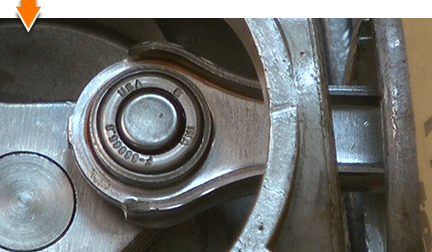
Connect the cylinder to the crankcase.
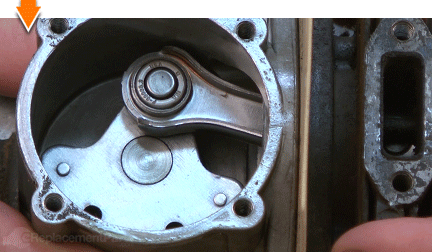
Secure the crankcase to the cylinder with the (2) screws.
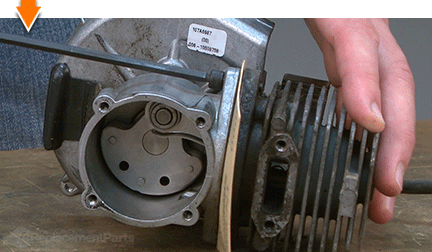
16. Reinstall the flywheel.
Install the woodruff key into the slot on the crankshaft.
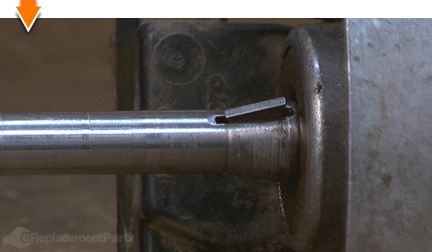
Tap the woodruff key lightly to seat it into place.
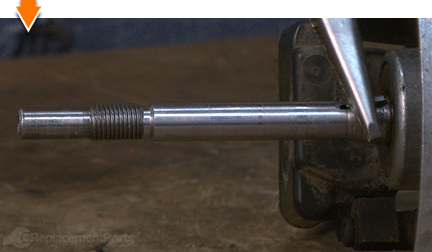
Install the flywheel onto the crankshaft spindle, ensuring alignment of the keyway with the woodruff key.
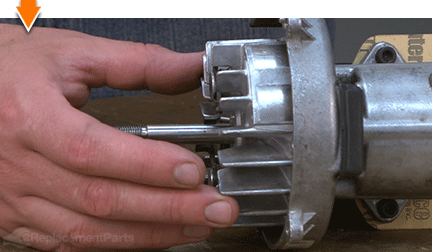
Use a rubber mallet to tap lightly around the surface of the flywheel (not the spindle). It is not necessary to completely secure the flywheel with the mallet; just tap it enough to ensure that the internal components engage and seat properly. Installation of the clutch assembly (in subsequent steps) will secure the flywheel to the crankshaft.
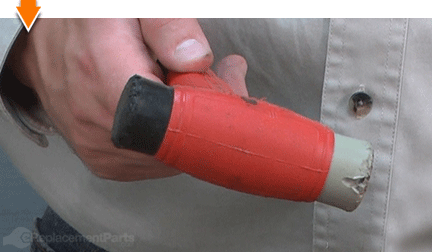
17. Reinstall the starter assembly.
Slide the spacer onto the crankshaft.
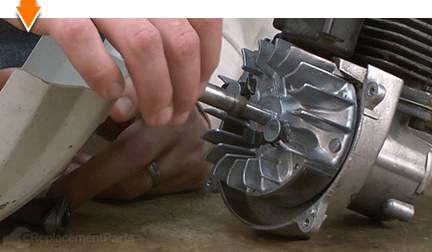
Connect the ignition wire to the ignition coil.
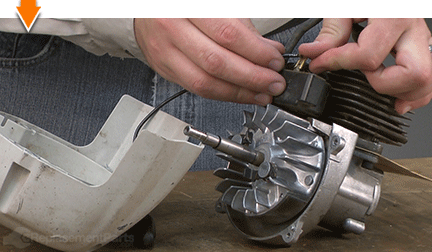
Install the starter assembly onto the crankshaft; tuck the ignition wires into the channel on the starter housing as you perform this step.
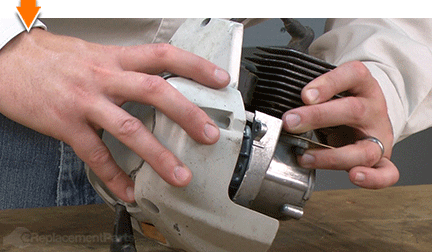
Align the starter assembly with the mounting holes on the engine.
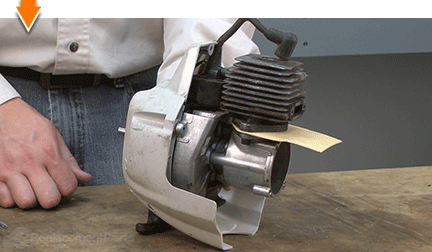
Hold the starter assembly in place while pulling gently on the starter rope. This will engage the starter pawls and ensure proper alignment.
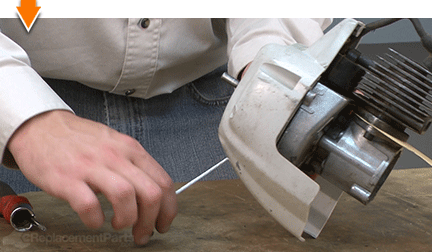
Secure the starter assembly to the engine with the (4) screws.
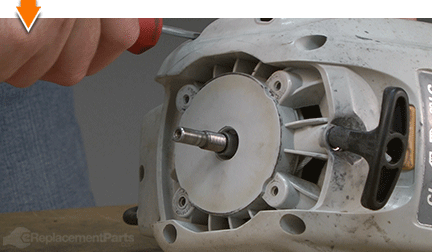
Install the plastic base.
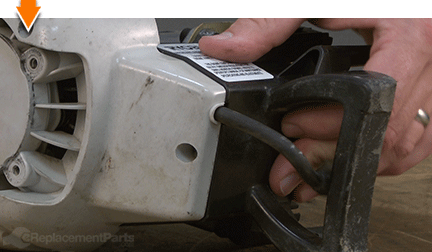
Secure the plastic base with the (1) screw.
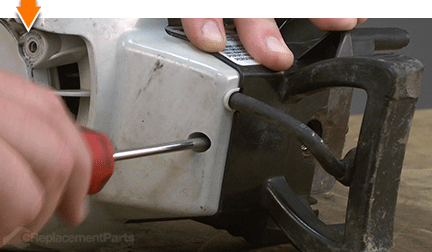
18. Bind the engine. (Again.)
Insert either end of an old starter rope (or similar rope) into the engine cylinder (through the spark plug hole). Continue feeding the rope into the cylinder until the piston is unable to move.
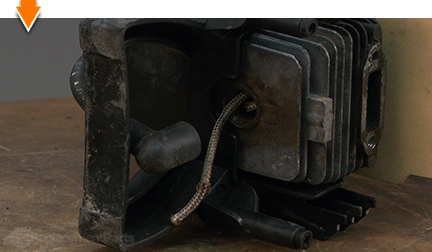
19. Reinstall the clutch.
Install the clutch washer.
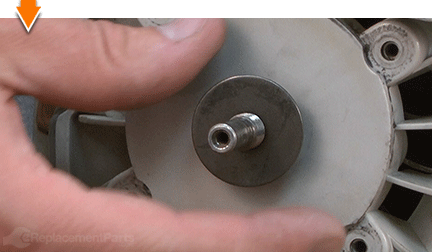
Thread the clutch onto the spindle until it is hand-tight.
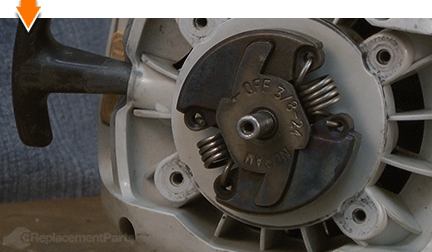
Place a shop rag over the clutch assembly to prevent damage during installation.
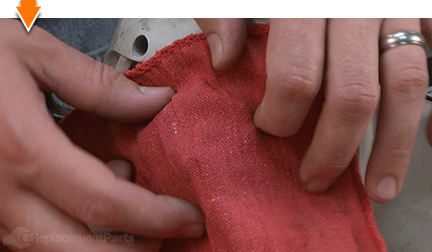
Use adjustable pliers to secure the clutch to the engine.
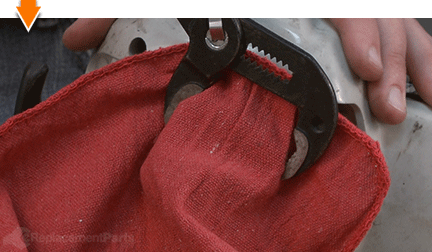
20. Reinstall the clutch drum.
Install the small spacer washer onto the spindle.
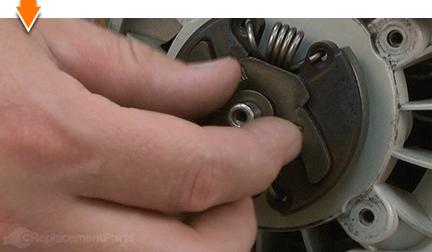
Install the clutch drum onto the clutch.
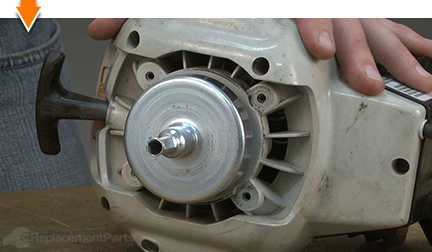
Secure the clutch drum to the spindle with the internal screw.
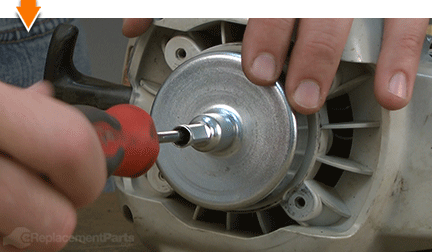
21. Reinstall the spark plug.
Remove the binding (starter rope) from the cylinder.
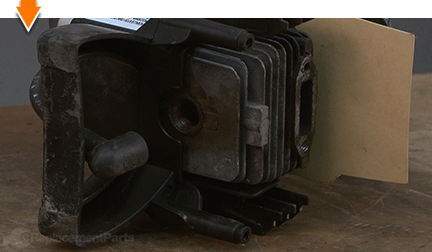
Install the spark plug into the cylinder.
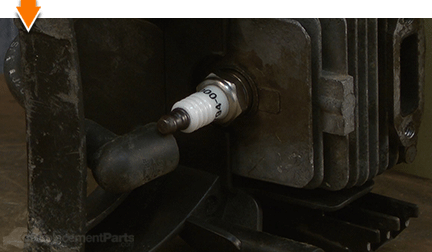
Use a spark plug wrench (or socket) to secure the spark plug.
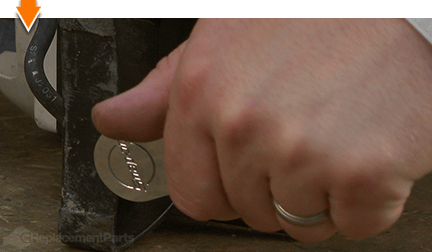
Replace the spark plug boot.
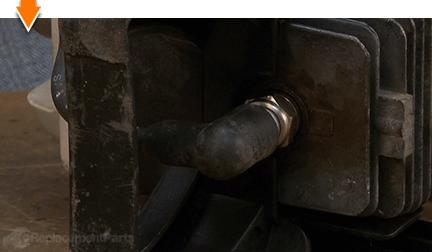
22. Reinstall the carburetor mounting assembly (with fuel tank).
Verify that the rubber tank isolator is properly positioned on the engine.
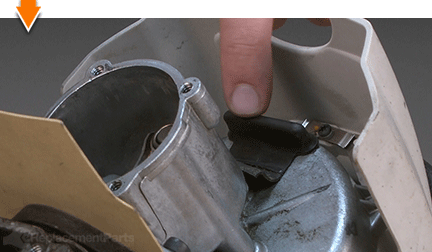
Install the fuel tank onto the engine.
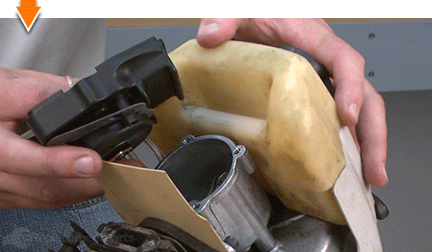
Install the second tank isolator (rubber) onto the carburetor mounting assembly.
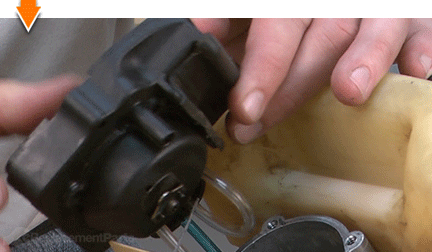
Verify that the crankcase gasket is properly positioned on the bottom of the carburetor mounting assembly.
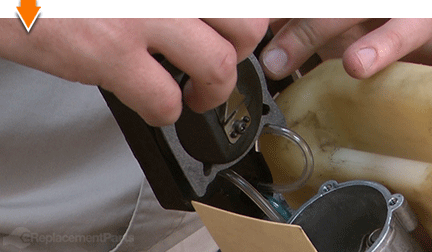
Install the carburetor mounting assembly onto the engine.
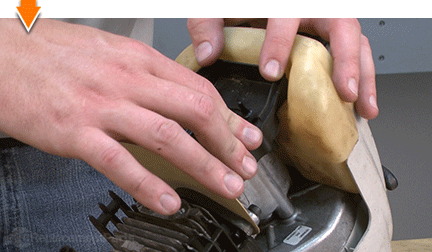
Secure the carburetor mounting assembly (and the fuel tank) to the engine with the (4) screws.
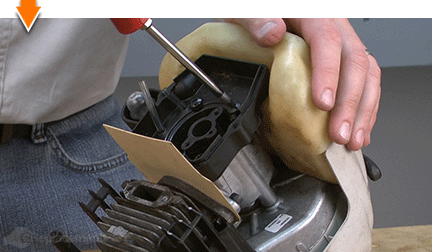
23. Reinstall the muffler.
Install the (2) mounting screws to the muffler assembly.
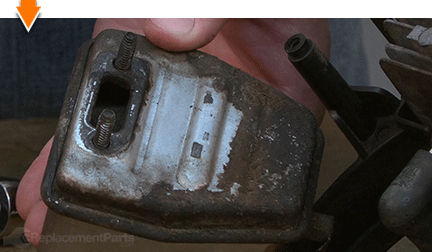
Install the exhaust gasket onto the muffler (the screws will help keep it aligned).
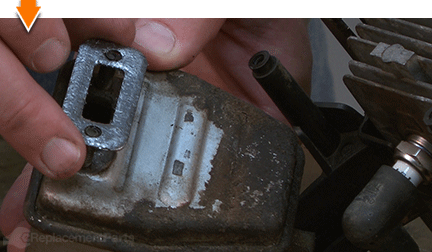
Install the muffler assembly and gasket onto the engine.
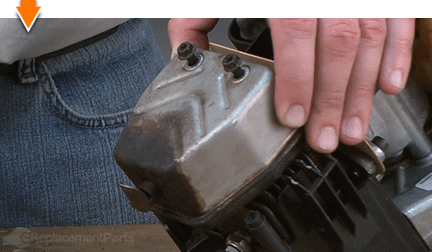
Secure the muffler assembly and gasket to the engine with the (2) screws.
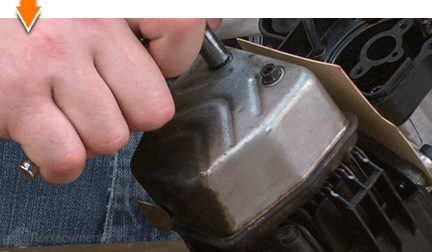
24. Reinstall the upper shaft and clutch drum housing to the engine.
Thread the throttle cable through the engine housing and through the opening on the carburetor mounting assembly.
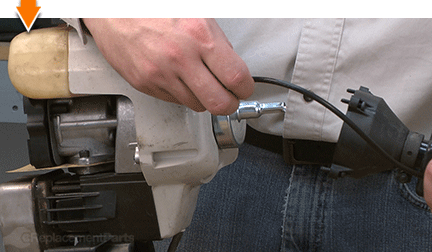
Reconnect the upper shaft and clutch drum housing to the engine.
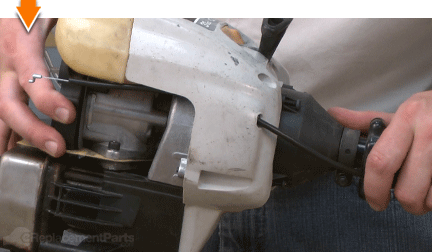
Secure the upper shaft and clutch drum housing with the (4) screws.
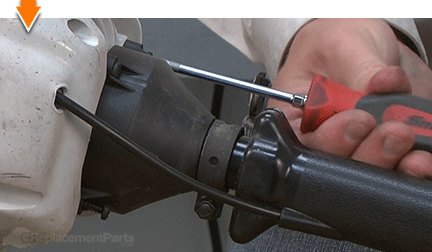
25. Reinstall the carburetor.
Install the carburetor gasket.
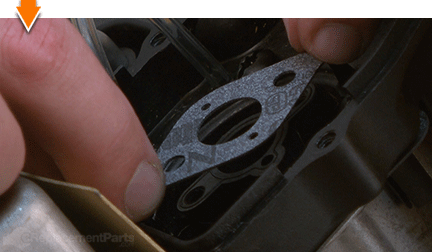
Install the throttle cable onto the throttle linkage of the carburetor.
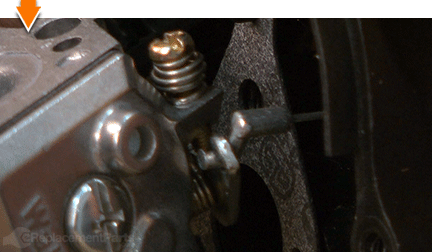
Install the incoming fuel line to the lower carburetor inlet.
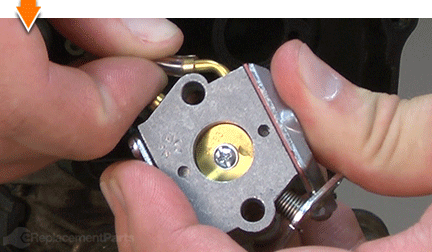
Install the (primer) fuel line to the upper carburetor inlet.
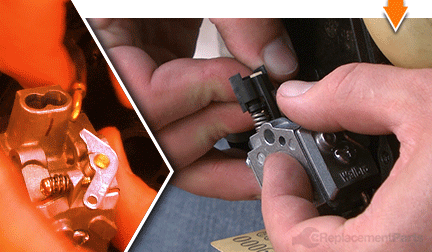
Install the carburetor mounting screws onto the choke plate and lever.
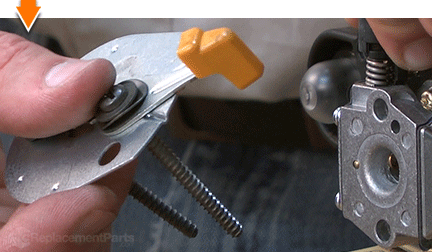
Secure the carburetor (and choke plate) to the engine with the (2) screws. Note that the choke lever and the wavy washer must be properly aligned before tightening the upper screw.
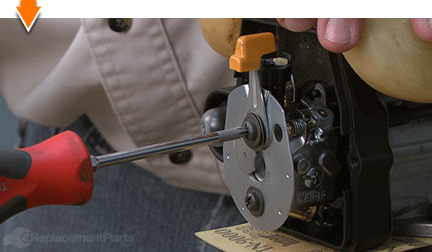
26. Reinstall the rear cover.
Reinstall the rear cover onto the engine.
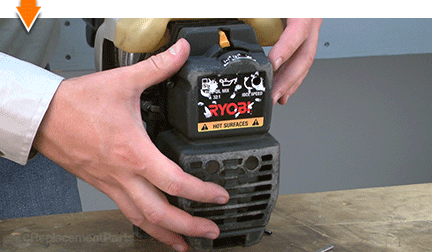
Secure the rear cover with the (4) screws.
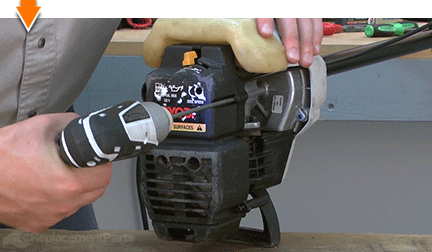

You don't have to leverage your savings to level your lawns. As you just learned, repairing your own equipment is easy when you follow our step-by-step guides. Not only did you restore trimmer functionality at a fraction of the cost of replacement; you have taken the edge off of future repairs, wherever you may find them.



















































